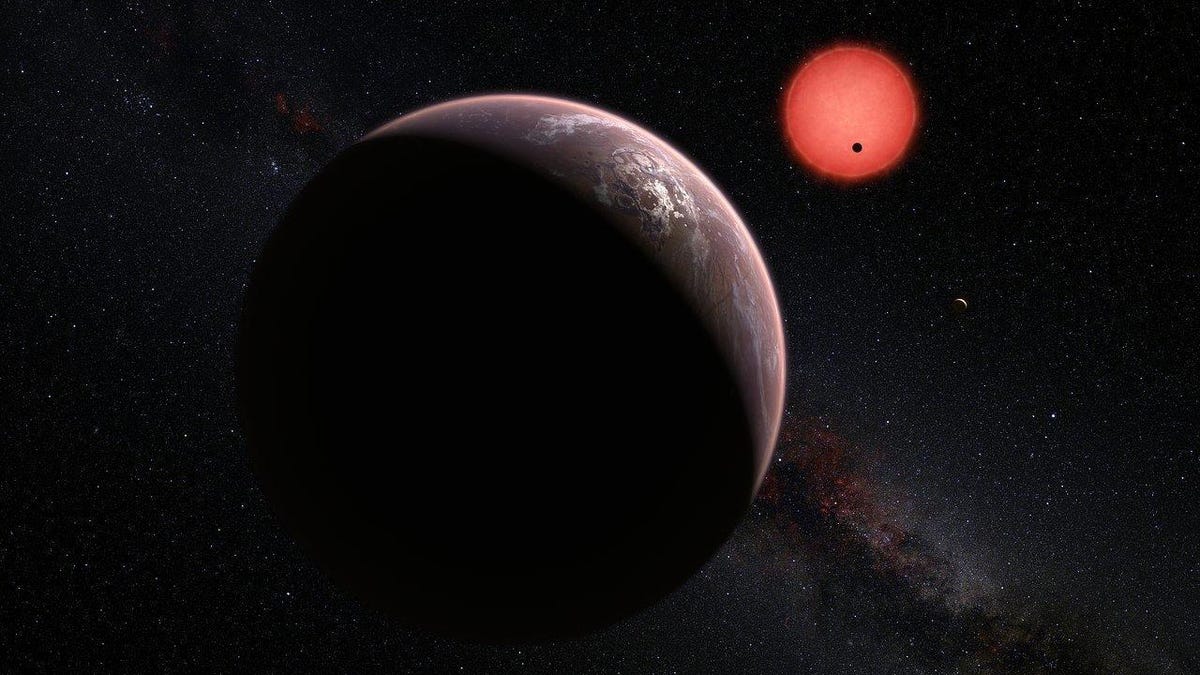This eccentric exoplanet's wild weather ranges from boiling hot to deep chill
It has the most elliptical path ever seen around a cool star, but it gets really hot every few weeks.

An artist's impression of an exoplanet system around a red dwarf star.
Astronomers have spotted one of the most eccentric exoplanets yet, at least in terms of its orbit.
Super-Earth TOI-2257 b is technically in the habitable zone of the cool red dwarf star it circles, but the planet's elongated path around its sun leads to some rather extreme temperature swings, making actual life on this world pretty impractical, at least as we know it.
"We found that TOI-2257 b does not have a circular, concentric orbit. ... In terms of potential habitability, this is bad news," explains University of Bern lead researcher Nicole Schanche in a statement. "While the planet's average temperature is comfortable, it varies from -80 degrees C (-112 F) to about 100 degrees C (212 F) depending on where in its orbit the planet is, far from or close to the star."
That means that seasons on this planet can range from literally boiling hot to a deep Antarctic chill. Oh, and because the planet only takes 35 days to make one trip around its host star, it likely goes from boiling to frozen stiff and back to boiling in a matter of just a few weeks.
Planet TOI-2257 b was first spotted by NASA's Transiting Exoplanet Survey Satellite, aka TESS, space telescope. A team of researchers led by Schanche used observations from the Mexico-based SAINT-EX observatory to determine the planet's bizarre orbit, which is the most eccentric path ever seen around a cool star.
The researchers suggest a possible explanation is that an unseen giant planet orbiting farther out from the star is tweaking the smaller planet's orbit with its gravity.
Details of the research and TOI-2257 b have been published in the journal Astronomy and Astrophysics.
The team is hopeful that the recently launched James Webb Space Telescope may be able to take another look at the curious planet.
"In particular, the planet could be studied for signs of features such as water vapor in the atmosphere," Schanche concludes.

